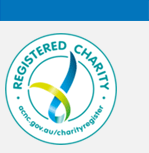Abstract
Hospital-acquired pressure injuries (HAPI) lead to complications such as increased pain, increased bed days, re-admissions, multiple surgical interventions, possible disfigurement, decreased quality of life, increased healthcare cost and mortality. There are several factors specific to the operating room suite which increase the risk of pressure injury development. Highlighting the need for OR specific pressure injury risk assessment tools. Research indicates that pressure injuries occurring in the OR can appear up to 48-72 hours post-surgery, thus the incidence of pressure injury originating in the OR is likely to be higher than is currently reported. Facilities in the USA are now attributing pressure injuries that appear 72 hours post-surgery to the care the patient received in the ORS.A study tour to the United States of America in 2017 discovered there are two pressure injury risk assessment tools for the operating room patient and numerous prevention strategies to minimise the risk of pressure injuries developing in the OR.
Recommended Citation
Goudas, Lauren and Bruni, Steven
(2019)
"Pressure injury risk assessment and prevention strategies in operating room patients – findings from a study tour of novel practices in American hospitals,"
Journal of Perioperative Nursing: Vol. 32
:
Iss.
1
, Article 6.
Available at: https://doi.org/10.26550/2209-1092.1040
Pressure Injury Risk Assessment and Prevention Strategies in Operating Room Patients.docx
Creative Commons License

This work is licensed under a Creative Commons Attribution 4.0 License.
Included in
Health Services Administration Commons, Health Services Research Commons, Perioperative, Operating Room and Surgical Nursing Commons, Surgery Commons


